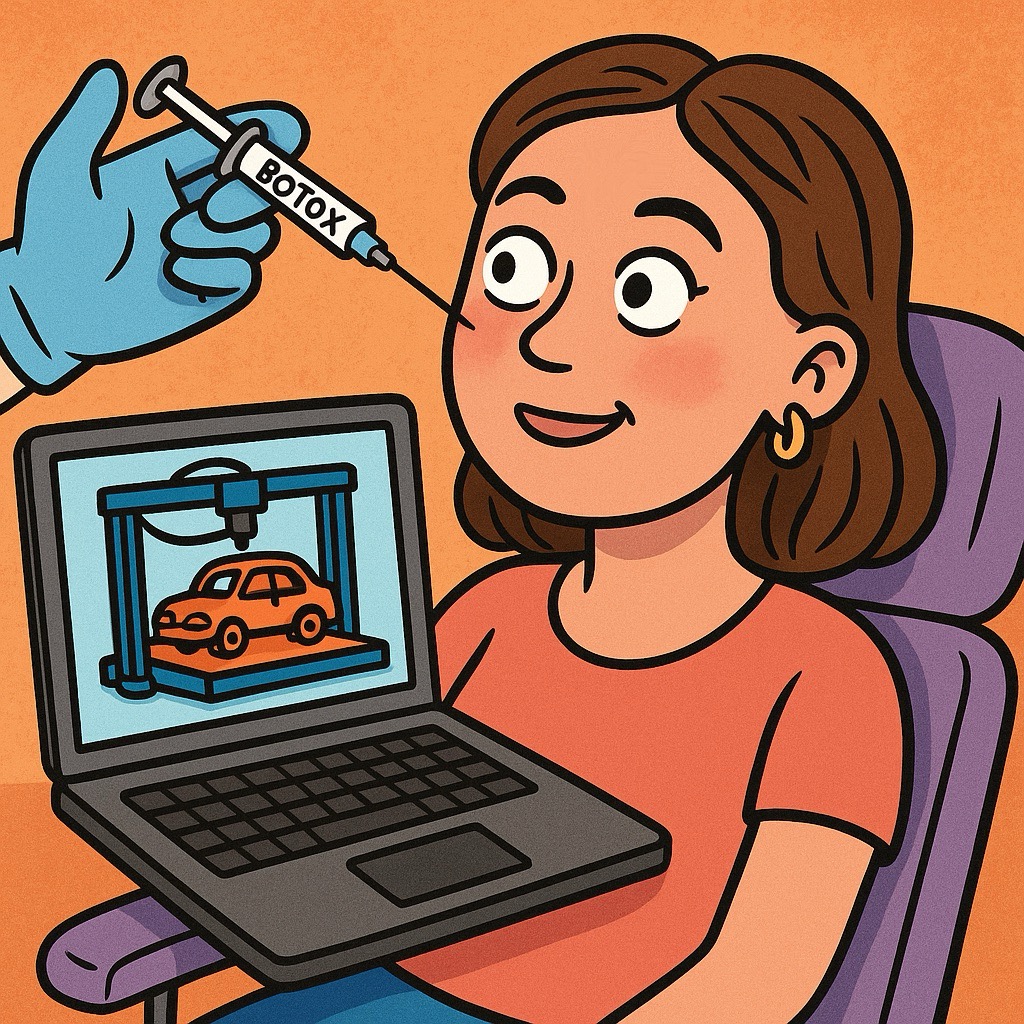Summary: Technologies take off before they're perfected, and we anchor to those early versions. But over time, they are quietly optimized until one day, they just work — and we hardly notice.

3D printing
I remember 3D printing really starting to get trendy 6 or 7 years ago. I was interested, but I’d heard a lot of downsides from acquaintances that dabbled: sure it was cool, but it was expensive, messy, and it took a lot of trial and error to get prints to come out nicely.
Around 2019, I went to a “learn how to 3D print” event at a maker lab and printed out a little phone/tablet stand. It worked pretty well, but it took forever, and the edges were a bit rough. Plus, these were fancy machines that cost over $1000. 3D printing didn't seem worth it.
Then, at the end of last year, I bought a BambuLab A1 Mini. And it just works. It’s great. And it was only a few hundred dollars. I've had a blast printing everything from a tie rack to golf ball stands.
Even though the concept and form factor hasn’t really changed, the underlying technology has leapfrogged from “works fairly well, but it’s finicky and expensive” to steady, reliable performance. What’s interesting to me is that this happened without any real fanfare or publicity. I still thought 3D printing would be hard, because I was stuck thinking about what it was like when it first got popular.
Streaming video
Recently, I’ve started occasionally streaming video from a friend’s self-hosted server. Overall, it works great. However, once or twice I’ve had some buffering issues, which are a bit annoying.
The last time that happened, though, I realized something — I hadn’t really experienced buffering in years. Ten years ago, Netflix, YouTube, and especially any sort of live stream buffered all the time. It was just part of the technology. But these days, I stream way more video than ever, including live events, and basically never experience lag.
Some of this might be because I personally have good, reliable internet. But better broadband availability could be part of this! Somewhere along the way, live streaming video just started to work, and I forgot I ever used to have issues.
Cars
In the 1920s and 30s, cars broke down constantly. You needed to know how to patch a tire and fix a belt just to get around reliably.
Today, of course, cars just work. I drive a 15-year-old sedan, and outside of filling the tank and getting the oil changed, I basically never think about it. It starts every time. It’s never broken down. I don’t worry about it overheating halfway through a drive.
And we’re on the edge of an even bigger shift: self-driving. Autonomous vehicles have been "a few years away” for at least 10 years (to say nothing of Tesla’s repeated promises). But recently, it seems like that tipping point has arrived, without all that much fanfare. Waymo is operating cars in several cities now, with no safety driver — and by all accounts, they’re excellent. Simple, reliable, and boring in a good way. People prefer them to human-driven Ubers.
Self-driving cars are no longer a sci-fi concept — they’re slowly becoming something that just works. But I bet a lot of people who haven't used a Waymo don't realize that yet.
Plastic surgery
Twenty years ago, plastic surgery seemed like it was usually pretty obvious. If someone got Botox, or especially a facelift or other injections, you could usually tell. But the good results were really good, and that was enough for plenty of people (and celebrities) to take the plunge.
I think many people are still anchored to this perception of plastic surgery. I know I was until recently. But anecdotally, from what I see and hear online, things have changed. Techniques have gotten much better, much subtler. And more and more (and younger and younger) people are getting work done as a result.
It might seem like it’s still easy to spot plastic surgery, because some people still have a procedure or two go awry, and those bad results stand out. But the reality is that in the past 10–20 years, behind-the-scenes progress has revolutionized the capabilities of "personal aesthetics".
What’s going on here?
New technologies don’t get perfected and polished before launch. They take off once they hit an inflection point: good enough for users to derive value. So 3D printing starts to be trendy even though it’s still inconsistent, expensive, and messy. Or cars take over, even when they break down constantly, because they're still that much better than horses.
And people tend to think of these technologies as they were when they first got popular. If you aren't a user, you'll anchor to what you heard when you first learned about them, and you won't have many reasons to update your thinking. And if you are a user, the problems will just slowly fade away without you noticing.
Because in the background, optimization is always churning onward. It’s not easy, or fast: Pareto’s law would tell us that the last 20% of improvement takes 80% of the work. Taking something from “good enough” to "basically perfect” takes years of slow, incremental improvements.
But those improvements do happen. And then one day you realize that you can’t remember the last time a video buffered, or that it’s been years since you had a flat tire. Or you buy a new 3D printer and it just works, like magic. ⧈